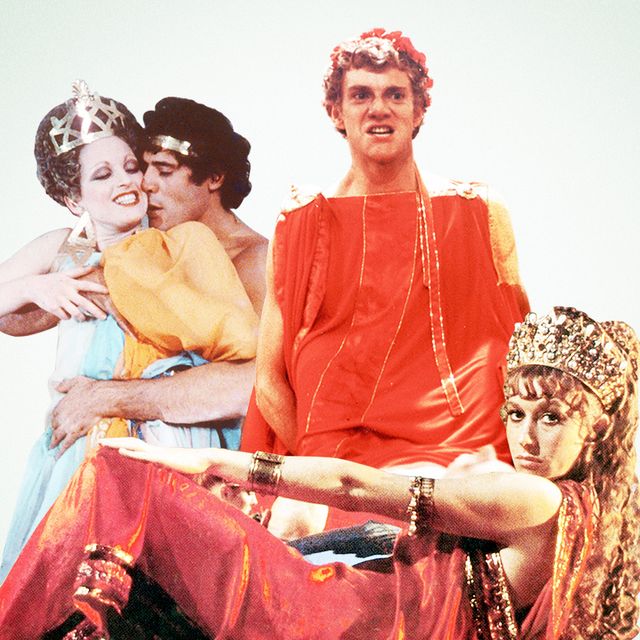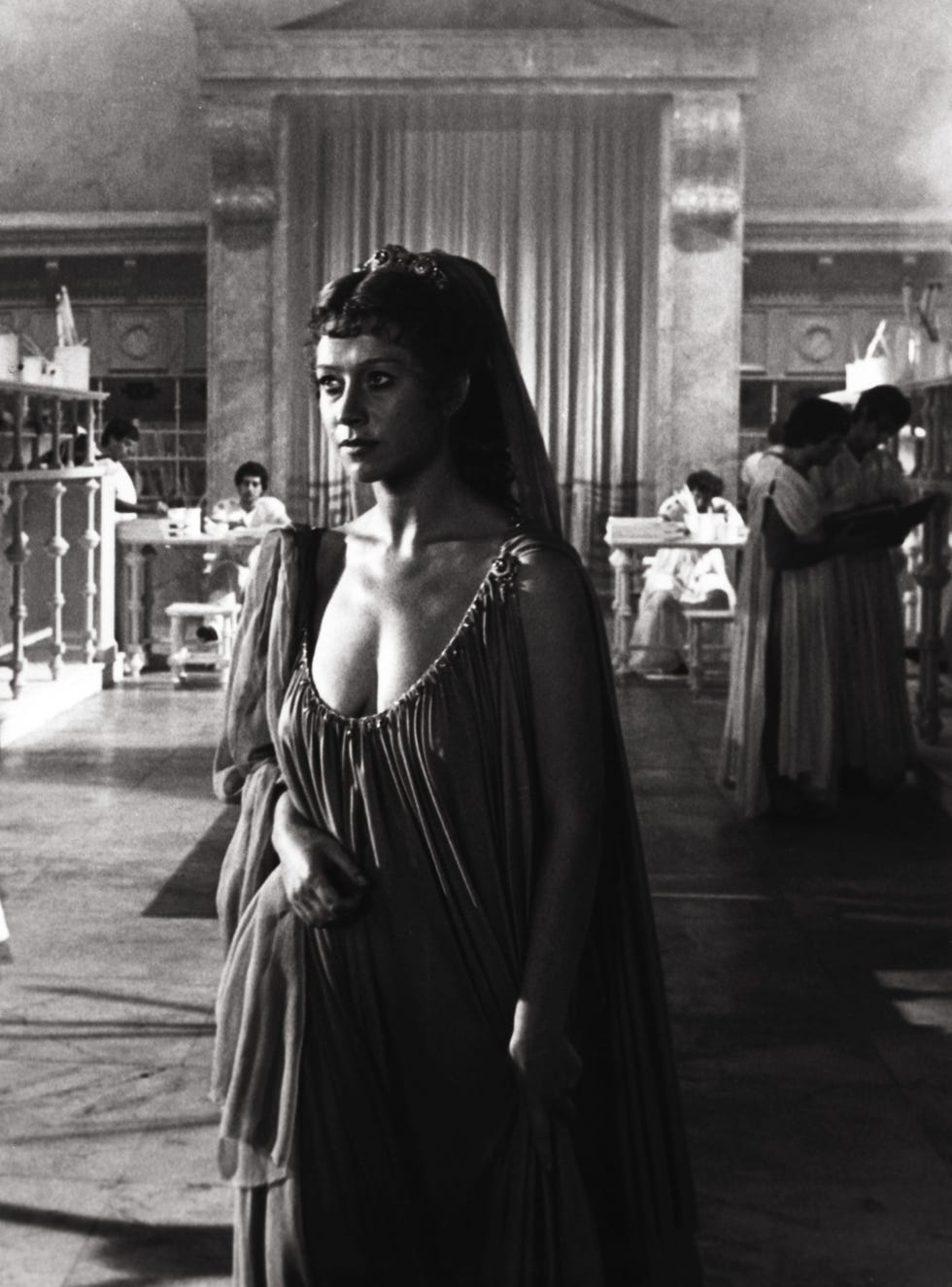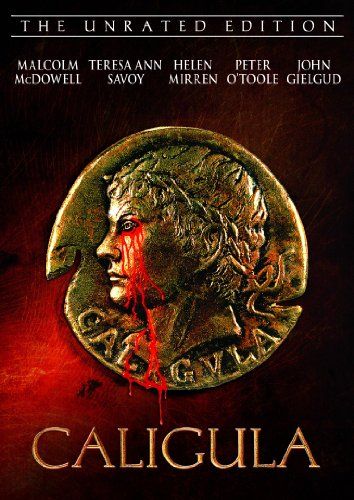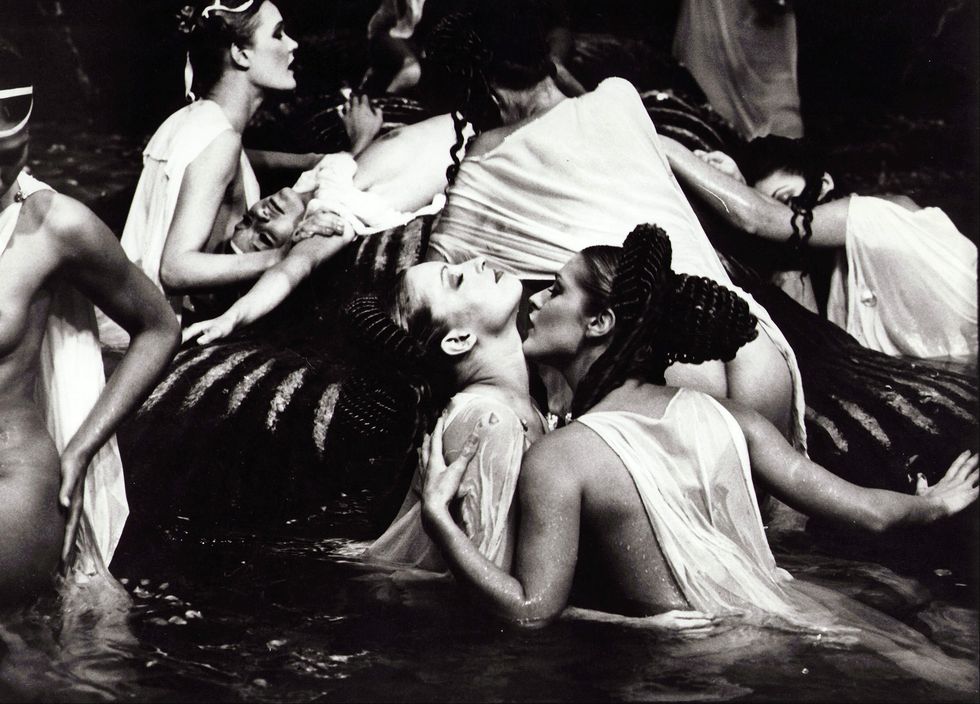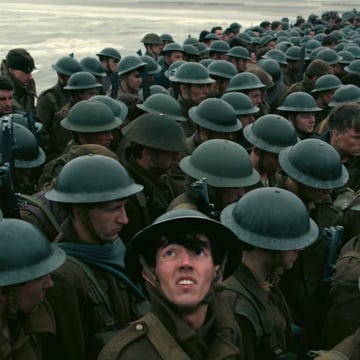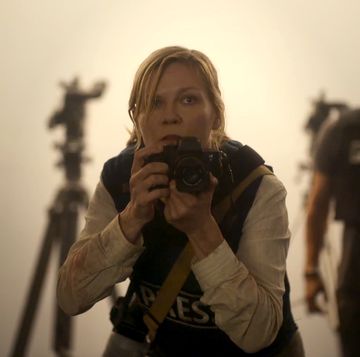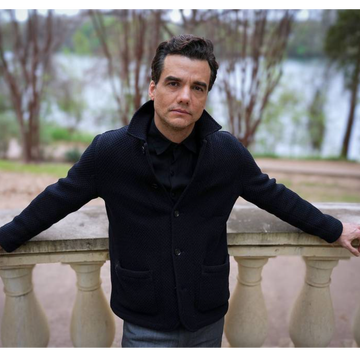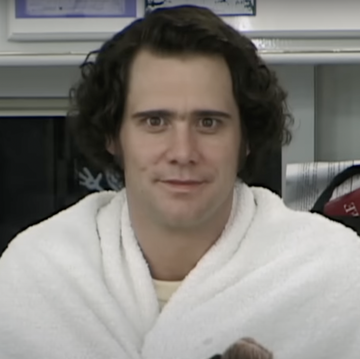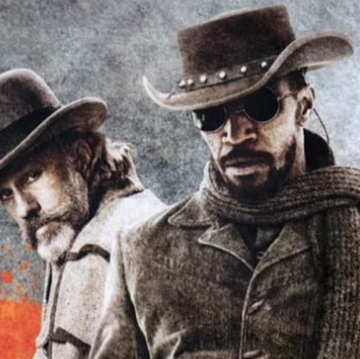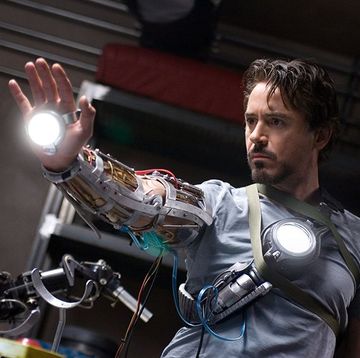I wouldn’t know where to even begin when it comes to tallying up how many truly shitty movies Roger Ebert had to sit through in his four-and-a-half decades as a film critic. Hundreds? Thousands? The doorstop-thickness of his essential anthology, I Hated, Hated, Hated This Movie offers a hint at the sheer massiveness of the number. It’s 406 pages long—and according to Ebert, it merely represented the tip of the iceberg. Still, even the most masochistic movie reviewer can have his or her limit. And in February of 1979, Ebert met his. A film that was so inept and god-awful he had to get up and walk out of the theater. Ladies and gentlemen, I give you Bob Guccione’s big-budget Ancient Rome porn extravaganza, Caligula.
Here’s how Ebert kicked off his review when he got back to his typewriter:
‘Caligula’ is sickening, utterly worthless, shameful trash. If it is not the worst film I have ever seen, that makes it all the more shameful: People with talent allowed themselves to participate in this travesty. Disgusted and unspeakably depressed, I walked out of the film after two hours of its 170-minute length. That was on a Saturday night, as a line of hundreds of people stretched down Lincoln Ave., waiting to pay $7.50 apiece to become eyewitnesses to shame. I wanted to tell them,,,what did I want to tell them? What I’m telling you now. That this film is not only garbage on an artistic level, but that it is also garbage on the crude and base level where it no doubt hopes to find its audience. ‘Caligula’ is not good art, it is not good cinema, and it is not good porn.
Now, come on. How are you not going to throw on Caligula after reading that? So I did. It had been nearly 20 years since I’d first seen the infamous sword-and-sandal porno dumpster fire. And witnessing it again, I was actually kind of impressed that Ebert managed to stay in his seat as long as he did. I think what I was hoping for this time around was some sort of so-bad-it’s-good cult classic. Instead, what I got was quite possibly the worst—and most unerotic—film ever made. Limping to the end credits of this I, Claudius-for-the-raincoat-set epic spectacular was like my own private Bataan death march. Afterwards, I was numb. I needed to how the hell this movie came to be. So I began digging.
Caligula wasn’t Guccione’s first foray into the more legitimate precincts of the movie business. The porn magnate had already helped finance a handful of major-studio productions such as Chinatown, The Longest Yard, and The Day of the Locust. But by the mid-‘70s, his publishing empire was such a hand-over-fist moneymaking juggernaut that he began to have delusions of Tinseltown grandeur, including the dream of bankrolling the most expensive, over-the-top, and sexiest Roman epic ever captured on celluloid.
Guccione, a waxworks vulgarian draped in gold medallions and silk shirts unbuttoned to the navel, spared no expense in his bid to become the Cecil B. DeMille of the Me Decade. Over at the more hifalutin’ Playboy, Hugh Hefner was expanding his portfolio with private nightclubs around the globe. And on the skeezier side of the railroad tracks over at Hustler, Larry Flynt was getting into the casino game when he wasn’t busy painting himself as a First Amendment martyr. That left Guccione, jealously stuck in the middle, looking for a way to leverage the Penthouse brand beyond his monthly bongo mag. Penthouse Films International was born.
Guccione’s first coup was signing Gore Vidal to pen the screenplay for Caligula. Vidal wouldn’t come cheap. He was paid $200,000 for his script, which he wrote as a debauched and homoerotic allegory about how absolute power corrupts absolutely. Caligula wasn’t written as a porno film. Not initially, at least. That would come later. Still, Vidal was no dummy and he probably should have seen what was coming the second he hopped into bed with a guy like Guccione. Instead, he naively believed that his saga about the mad, monstrous emperor who became synonymous with cruelty, insanity, and megalomania would be a relatively classy affair.
The search for a director came next, and Guccione reached out to legendary old-school Hollywood man’s man John Huston and the Euro arthouse darling Lina Wertmuller to helm the film. Perhaps sensing that this was the sort of lipstick-on-a-pig proposition that’s best avoided, both smartly passed. Guccione then moved on to Italian filmmaker Tinto Brass, who at the time was still a competent and stylish auteur before his post-Caligula career would spiral into a series of wafer-thin Love, American Style romps filmed for the sole purpose of fetishizising women’s derrieres.
Guccione’s most impressive bit of Barnumesque salesmanship came when it was time to cast Caligula. With seemingly bottomless cash reserves, the skin-rag impresario somehow sweet-talked some of the United Kingdom’s most respected thespians into packing their bags and heading to Rome’s Dear Studios in the summer of 1976, where the legendary Oscar-winning production designer Danilo Donati was busy at work on his Fellini-esque sets (they’re the only praise-worthy thing in the film). A Clockwork Orange’s Malcolm McDowell signed on to play the perverted, power-drunk lead. Peter O’Toole agreed to be covered in crusty syphilitic sores as Caligula’s depraved uncle, Tiberius. Sir John Gielgud took a break from the stage to play Tiberius’ voice-of-reason advisor, Nerva. And a 31-year-old Helen Mirren put modesty (and common sense) aside to portray Caligula’s libertine, sex-starved wife Caesonia. Mirren would later jokingly refer to Caligula as “an irresistible mix of art and genitals.” On the first day of shooting, O’Toole walked up to Gielgud and back-slappingly teased, “Hello, Johnny! What is a knight of the realm doing in a porno movie?!”
But Caligula wasn’t supposed to be a porno movie. Not exactly. Yes, there would be ample nudity of both the male and female variety. And sure, Guccione had personally flown a bevy of his magazine’s voluptuous Penthouse Pets to Italy to appear as horny extras. But it didn’t start out as the hardcore film that would end up playing in theaters. It was still being hyped as a lusty historical drama from the sophisticated quill of Gore Vidal starring some of the world’s most respected actors. It would be Ben-Hur with titillating dollops of nudity. Not Ben-Hur with oral, anal, and money shots.
As the budget on Caligula started ballooning— eventually soaring past $17 million—Guccione began to get a little antsy. That’s when he decided to put his fantasies of becoming the next David O. Selzick on hold and reverted back to what he was and always had been: a realist, a pornographer. Sensing that there was no way he could recoup his costs on the film, he decided (unbeknownst to his writer, director, and stars) that he needed to take control of the film back from director Tinto Brass. Guccione snuck onto the set late at night and stealthily shot hours of graphic triple-X inserts to splice into the film. The result would be a weird, bloated Frankenstein monster of theatrical overacting and close-up copulating that all buts rubs the audience’s nose in gore and genitalia.
If you’ve never feasted your eyes on Caligula and harbor thoughts that Guccione’s post-production tinkering might have turned the film into a sexy, transgressive turn-on, you’ll be very disappointed. Caligula’s endless string of orgies and wall-to-wall tight shots of stiff giblets are complemented by graphic castration sequences, exhausting blowjob marathons, slobbery cunnilingus smorgasbords, and geysers of spunk. It’s not just a turn-off, it’s artless and tedious. Guccione spent $17 million to make sex look boring.
Not surprisingly, Vidal and Brass would both disown Guccione’s cut of Caligula. However, the Penthouse provocateur did achieve one thing he set out to do: The film was controversial. So controversial, in fact, that shortly after a three-and-a-half hour version of the movie was screened at the 1979 Cannes Film Festival, it was banned in several countries, including the country where it was made, Italy. Guccione called the scandal surrounding the film as “the kind of coverage money can never buy.”
With Caligula, Guccione tried to walk the fine line between art and smut—and failed spectacularly. Still, he would end up making a profit on the film, even if his ambitions to become a Hollywood player would never materialize in the way he’d hoped. McDowell, O’Toole, Gielgud, and Mirren, they would all emerge from the fiasco unscathed. As for Vidal, his six-figure check cleared and he was able to dine out on Caligula war stories for years.
Still, it was the critics who were the real winners. They would be handed the all-too-rare gift of a once-in-a-decade-caliber disaster that they could dogpile on without mercy. Variety’s reviewer called Caligula “a moral holocaust.” And Rex Reed dismissed it as a “trough of rotten swill.” But let’s return to Roger Ebert for the final word, shall we? After completely eviscerating the movie for a dozen or so newspaper paragraphs, he ends his review with an overheard quote spoken by a woman in the lobby of the theater after Caligula ended. “This movie,” said the lady in front of me at the drinking fountain, “is the worst piece of shit I have ever seen.”
